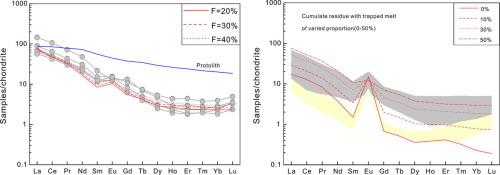当前位置:
X-MOL 学术
›
J. Asian Earth Sci.
›
论文详情
Our official English website, www.x-mol.net, welcomes your feedback! (Note: you will need to create a separate account there.)
Fluid-fluxed melting of orogenic crust in the South Qinling Belt, central China: Implications from migmatites of the Foping dome
Journal of Asian Earth Sciences ( IF 3 ) Pub Date : 2021-02-01 , DOI: 10.1016/j.jseaes.2020.104606 He Zhang , Hong Cheng , Guanghui Wu , Xiguang Huang , Song He , Fukun Chen
Journal of Asian Earth Sciences ( IF 3 ) Pub Date : 2021-02-01 , DOI: 10.1016/j.jseaes.2020.104606 He Zhang , Hong Cheng , Guanghui Wu , Xiguang Huang , Song He , Fukun Chen

|
Abstract Early Mesozoic partial melting event was recorded in voluminous migmatites within the Foping dome of the South Qinling Belt, central China. Petrogenesis of migmatites has not been well constrained. In this paper, we present an integrated study of petrography and geochemistry for migmatites and leucosomes exposed in the Longcaoping area of the Foping dome to decipher the partial melting processes. Mineral assemblage, geochemical characteristics and P-T estimation suggest migmatites were mainly formed under the conditions of 2.6-5.0 kbar and 695-779℃ through fluid-fluxed melting of plagioclase + quartz + biotite + fluid → amphibole + melt. Leucosomes can be roughly divided into two groups based on their petrological and geochemical data. Geochemical modelling suggests one group of leucosomes without obvious Eu-anomalies could be derived from moderate degrees of melting of the protolith leaving amphibole-plagioclase dominated residue. Another group with highly positive Eu-anomalies represents melts that experienced significant crystallization of felsic minerals. We propose migmatites and leucosomes were formed by decompression melting of protoliths in middle crust resulting from the delamination of thickened crust in the South Qingling Belt after assembly with the Yangtze Block. Field relationships suggest the significant melt migration from external sources may be an important emplacement mechanism for Late Triassic granitic plutons in the South Qinling Belt.
更新日期:2021-02-01



























 京公网安备 11010802027423号
京公网安备 11010802027423号